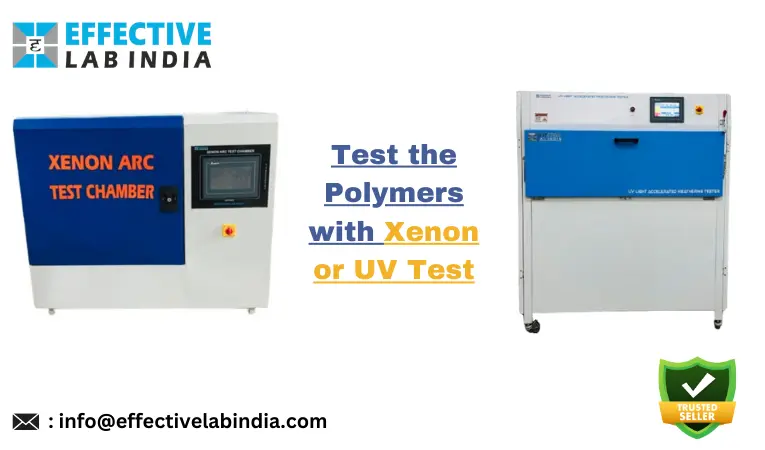To assess the lifespan of polymer products, different weathering tests have been conducted. The most common and important tests for polymer products are xenon arc tests and UV weathering tests because they reveal some important aspects of their behaviour. There is not much difference between these tests as they are important for polymers. So, if you are a polymer manufacturer, choose the products to be tested and decide the type of test to be conducted. Let us discuss some aspects of both UV and Xenon arc tests.
UV Test of Polymers
Ultraviolet Radiations affect the physical and chemical properties of polymers badly. UV light is very destructive. Manufacturers need to test the performance of polymer products in sunlight /exposure outdoors. It is because UV radiations are present in sunlightn and when the products are used/placed outside the sunlight reaches them and affects the polymer products. UV weathering of the products can be tested by using a UV weathering test chamber. In this test chamber, there is a provision of UV light, temperature adjustment and simulation of humidity. In this chamber, periodic environmental conditions are simulated. The sample to be tested is exposed to continuous radiations of fluorescent UV light and hence after the set time, the effects of UV on the sample will be evaluated.
Xenon Test of Polymers
Xenon is the chemical that has the biggest effect on the polymer’s properties and, in cases where exposure to it occurs over an extended period, it can lead to wear and tear or degradation. In the majority of the Xenon test chamber, a regulated testing environment is created where moisture tests can be conducted simultaneously. The polymer is exposed to a humid environment for a longer period when it is utilized outside. If such conditions are not tested the product may break sooner and require more replacement costs when used in real-world scenarios. This is the reason why weathering testing like Xenon arc weathering is important. Moreover, Thermal shock and mechanical erosion can also be tested by using this test method. Moreover, in the xenon arc weathering test, the sample is tested on three parameters: Temperature, irradiance and Humidity.
The weathering chamber manufacturers allow the operators to control the light’s irradiance, enabling the test procedure to be adjusted by internal testing standards or testing needs. Now, The question is which one is more widely used? The Xenon test chamber or UV test chamber? The answer to this question is that both are two distinct machines that each have their function and uniquely assess the polymer’s qualities.
However, you can Contact Effective Lab India’s specialists if you need help selecting the ideal machine for your lab or company.

